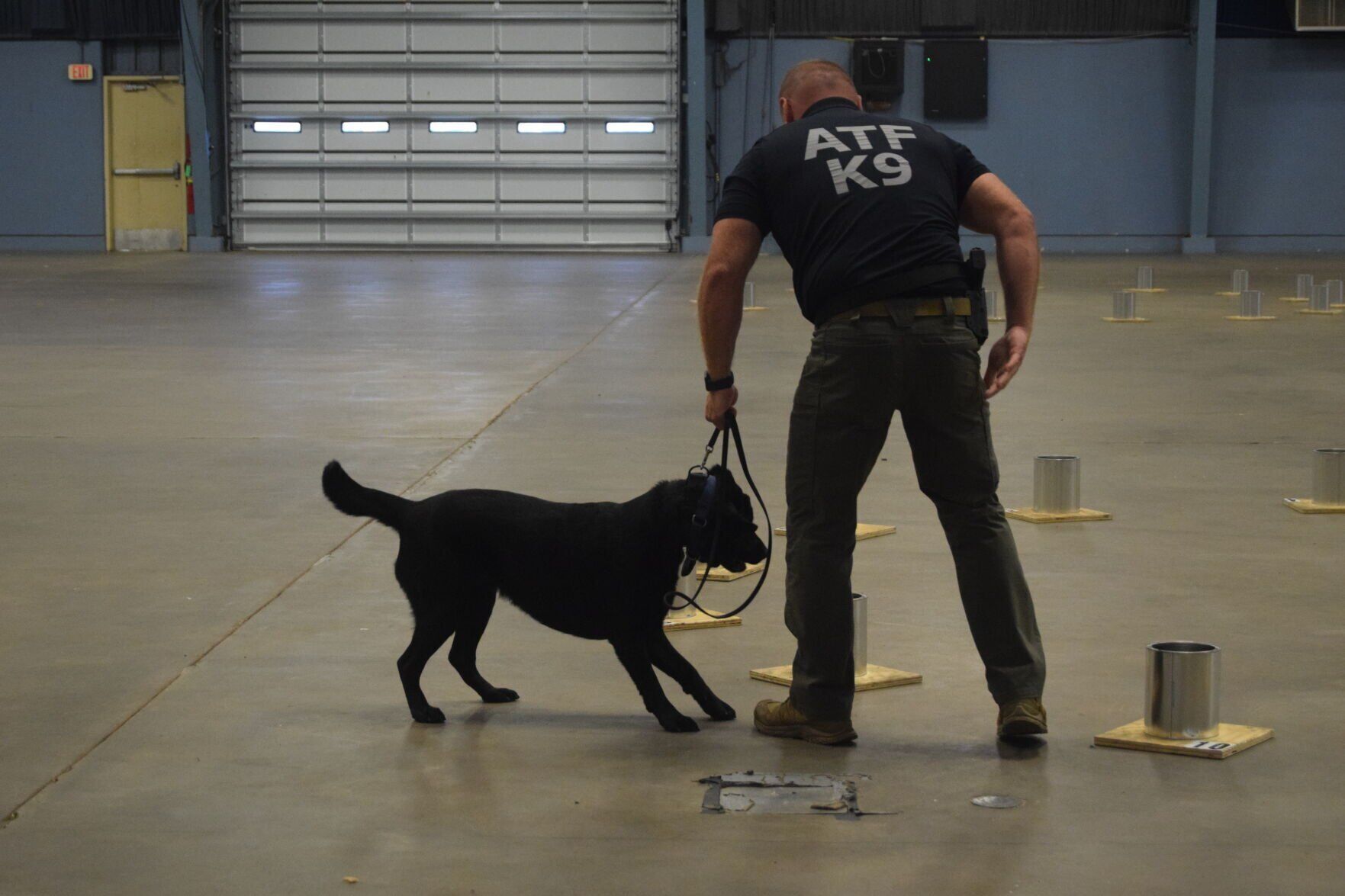Special agents from the Bureau of Alcohol, Tobacco, Firearms and Explosives led K-9 units in an explosive detection exercise at the state fairgrounds on Wednesday. The teams worked diligently to identify cans containing explosive odors, enhancing their skills to ensure public safety.
Explosive-detection K-9 testing hosted by ATF

Key Takeaways:
- ATF special agents hosted an explosive detection event for K-9 units.
- K-9 teams identified cans with explosive odors at the state fairgrounds.
- The exercise took place on Wednesday, focusing on skill enhancement.
- Training aimed to strengthen detection capabilities of K-9 units.
- Improved detection skills contribute to public safety measures.
ATF Hosts Explosive Detection Training at State Fairgrounds
Special agents from the Bureau of Alcohol, Tobacco, Firearms and Explosives (ATF) led K-9 units in a critical explosive detection exercise on Wednesday at the state fairgrounds. The event focused on sharpening the dogs’ abilities to identify explosive odors, a vital component in preventing potential threats.
Significance of K-9 Units in Explosive Detection
K-9 units play an indispensable role in law enforcement’s efforts to detect and prevent explosive-related incidents. Their heightened sense of smell allows them to identify substances that might be undetectable by human senses, making them a crucial asset in safety operations.
Details of the Training Exercise
During the exercise, K-9 teams were tasked with investigating a series of cans placed throughout the fairgrounds. Some of these cans contained explosive odors, challenging the dogs to use their training to distinguish and alert their handlers to potential threats. The realistic setting provided an effective environment for the teams to apply their skills.
ATF’s Role in the Training
Led by ATF special agents, the training offered an opportunity for both the canines and their handlers to refine their techniques under expert supervision. The agents coordinated the exercise, ensuring protocols were followed and providing guidance to enhance the effectiveness of the detection process.
Implications for Public Safety
Exercises like this are crucial in enhancing the readiness of K-9 units. By improving their detection capabilities, these teams are better prepared to contribute to public safety efforts. The skills honed during such events are essential for responding effectively to potential explosive threats in various settings.
Conclusion
The collaboration between ATF special agents and K-9 units at the state fairgrounds underscores a commitment to maintaining safety and security. Through dedicated training and preparedness, these teams strengthen the frontline defense against potential dangers, contributing significantly to community protection.











